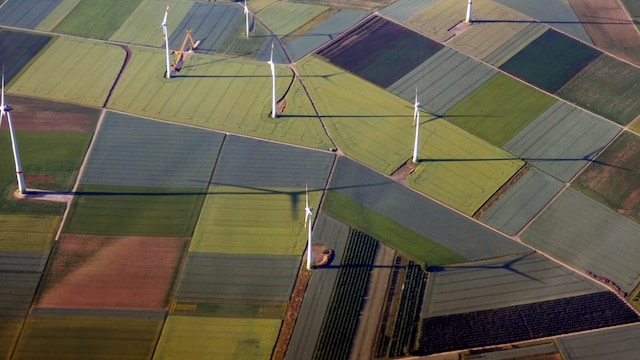
In the pursuit of sustainable development and a greener future, the concept of carbon offsetting is a critical strategy to combat the perils of climate change. As the world collectively grapples with the escalating challenges posed by greenhouse gas emissions, an urgent need to balance our ecological footprint has become evident. Carbon offsetting, a practice rooted in the principle of reducing greenhouse gas emissions, offers a potential solution to mitigate the devastating impact of human activities on our fragile environment.
Understanding Carbon Offsetting
Carbon offsetting is a dynamic and innovative approach to combat the adverse effects of climate change. By neutralizing carbon emissions through the investment in environmentally friendly projects, individuals, organizations, and even nations can take responsibility for their carbon footprint and contribute to a sustainable future.
The process involves compensating for the release of carbon dioxide (CO2) and other greenhouse gases into the atmosphere by funding projects aimed at reducing or removing an equivalent amount of emissions elsewhere. It serves as a mechanism to balance out the negative impact of our activities and support initiatives that promote sustainability.
How Does Carbon Offsetting Work?
The first step in carbon offsetting is understanding and quantifying the amount of carbon emissions that need to be offset. This process involves calculating the carbon footprint associated with various activities, such as travel, energy consumption, and manufacturing processes.
- Choosing Offset Projects
Once the carbon emissions are determined, the next step is to select offset projects that align with specific environmental goals. These projects can range from renewable energy installations, reforestation initiatives, methane capture projects, to improvements in energy efficiency and waste management.
- Calculating Carbon Offsets
Carbon offsets are calculated based on the reduction or removal of a specified amount of greenhouse gas emissions. Each offset represents one metric ton of carbon dioxide equivalent (CO2e) that has been prevented from entering the atmosphere or removed from it.
- Investing in Offset Projects
Investment in offset projects is crucial to support their implementation and ensure their effectiveness. This financial support assists in the development and maintenance of renewable energy infrastructure, the restoration of ecosystems, and the implementation of innovative technologies.
Types of Carbon Offset Projects
When it comes to carbon offsetting, there is a wide array of projects available that contribute to reducing or removing greenhouse gas emissions. These projects are designed to combat climate change and promote sustainable practices. Let’s explore some common types of carbon offset projects:
Renewable Energy Projects
Renewable energy projects focus on harnessing clean and sustainable sources of power to reduce reliance on fossil fuels. They include initiatives such as wind farms, solar power installations, hydroelectric plants, and geothermal energy systems.

By shifting towards renewable sources, these projects offset carbon emissions by decreasing the demand for electricity generated from fossil fuels.
Reforestation and Afforestation
Reforestation projects involve the restoration of forests in areas that have experienced deforestation or degradation. By planting trees, these projects remove carbon dioxide from the atmosphere through the process of photosynthesis, effectively offsetting carbon emissions. Afforestation, on the other hand, involves planting trees in areas where forests have not previously existed, further expanding carbon absorption capabilities.
Methane Capture and Reduction
Methane, a potent greenhouse gas, is emitted from various sources, including landfills, agricultural activities, and natural gas production. Methane capture projects aim to capture and utilize this gas, preventing it from being released into the atmosphere. Examples include methane collection from landfill sites and the implementation of anaerobic digesters in agricultural settings.
Energy Efficiency Improvements
Energy efficiency projects focus on reducing energy consumption and minimizing waste by adopting more efficient technologies and practices. This can include initiatives such as installing energy-efficient lighting, upgrading insulation, optimizing industrial processes, and promoting energy-saving behaviors. By curbing energy usage, these projects decrease carbon emissions and help mitigate climate change.
Improved Waste Management
Effective waste management projects contribute to carbon offsetting by minimizing emissions from organic waste decomposition. These projects promote practices such as composting, anaerobic digestion, and the capture and destruction of landfill gas.

By reducing methane emissions from waste, these initiatives contribute to both climate change mitigation and sustainable waste management practices.
Benefits and Criticisms of Carbon Offsetting
Carbon offsetting, as a means to mitigate climate change, offers numerous benefits and opportunities for individuals, organizations, and governments alike. However, it also faces some criticisms and challenges. Here, we explore the key aspects of both the benefits and criticisms of carbon offsetting:
Benefits of Carbon Offsetting:
1. Climate Change Mitigation: By investing in carbon offset projects, individuals and organizations can actively contribute to reducing greenhouse gas emissions and combatting climate change. These projects help to remove or reduce carbon dioxide and other greenhouse gases from the atmosphere, thus offsetting the impact of human activities.
2. Sustainable Development: Carbon offsetting promotes sustainable development by incentivizing the adoption of clean energy sources, improving energy efficiency, and supporting environmentally friendly practices. This, in turn, fosters economic growth while safeguarding the environment.
3. Biodiversity Conservation: Many offset projects, such as reforestation and habitat restoration, contribute to the preservation and restoration of ecosystems. These initiatives promote biodiversity by creating new habitats and protecting existing ones, supporting a healthy and resilient natural environment.
4. Technological Innovation: Investment in carbon offset projects drives technological advancements in renewable energy, waste management, and other sustainable practices. This promotes the development and implementation of innovative solutions to address the challenges of climate change on a global scale.
5. Social and Economic Co-Benefits: Carbon offset projects often generate social and economic co-benefits for local communities. For instance, renewable energy projects create job opportunities, improve access to clean energy, and enhance energy security. Additionally, projects may prioritize partnerships with indigenous communities, empowering them to actively participate in sustainable development.

CRITICISMS OF CARBON OFFSETTING:
1. Additionality and Accountability: Some criticize carbon offsetting for the difficulty in accurately measuring and guaranteeing the additional emissions reductions achieved through offset projects. Proper accounting and certification systems are essential to ensure the integrity of carbon offset projects and guard against double-counting or overestimation of emission reductions.
2. Delaying Systemic Change: Critics argue that carbon offsetting may provide a temporary solution and divert attention away from the urgent need for systemic changes in sectors such as energy, transportation, and agriculture. Offsetting should be seen as a complement, rather than a substitution, to comprehensive emission reduction strategies.
3. Lack of Permanence: The effectiveness of offset projects, particularly those related to reforestation or habitat restoration, can be questioned due to risks of natural disasters, disease outbreaks, or land-use changes that can reverse the carbon sequestration achieved. Ensuring the permanence of emission reductions is crucial for maintaining the environmental benefits of carbon offsetting in the long term.
4. Ethical Concerns: Critics raise ethical concerns about whether carbon offsetting allows individuals or organizations to continue emitting greenhouse gases without making sufficient efforts to reduce their own emissions. They argue that carbon offsetting should not be treated as a license to pollute but rather as part of a broader strategy to transition to a low-carbon economy.
5. Inequity and Social Justice: There is a need for carbon offset projects to prioritize equitable distribution of benefits, avoid land grabbing, and ensure the protection of the rights and well-being of affected communities. It is essential to address potential negative social or environmental impacts and actively engage with local stakeholders to ensure that projects align with the principles of social justice and fairness.
Carbon offsetting is a promising strategy to mitigate climate change and promote sustainability. It can effectively contribute to carbon reduction, support global initiatives, drive innovation, and create awareness. However, the effectiveness of carbon offsetting relies on addressing its limitations, such as ensuring additionality, maintaining permanence, and prioritizing emission reduction measures. By addressing these challenges, carbon offsetting can play a crucial role in our collective efforts to combat climate change and create a greener future for generations to come.


